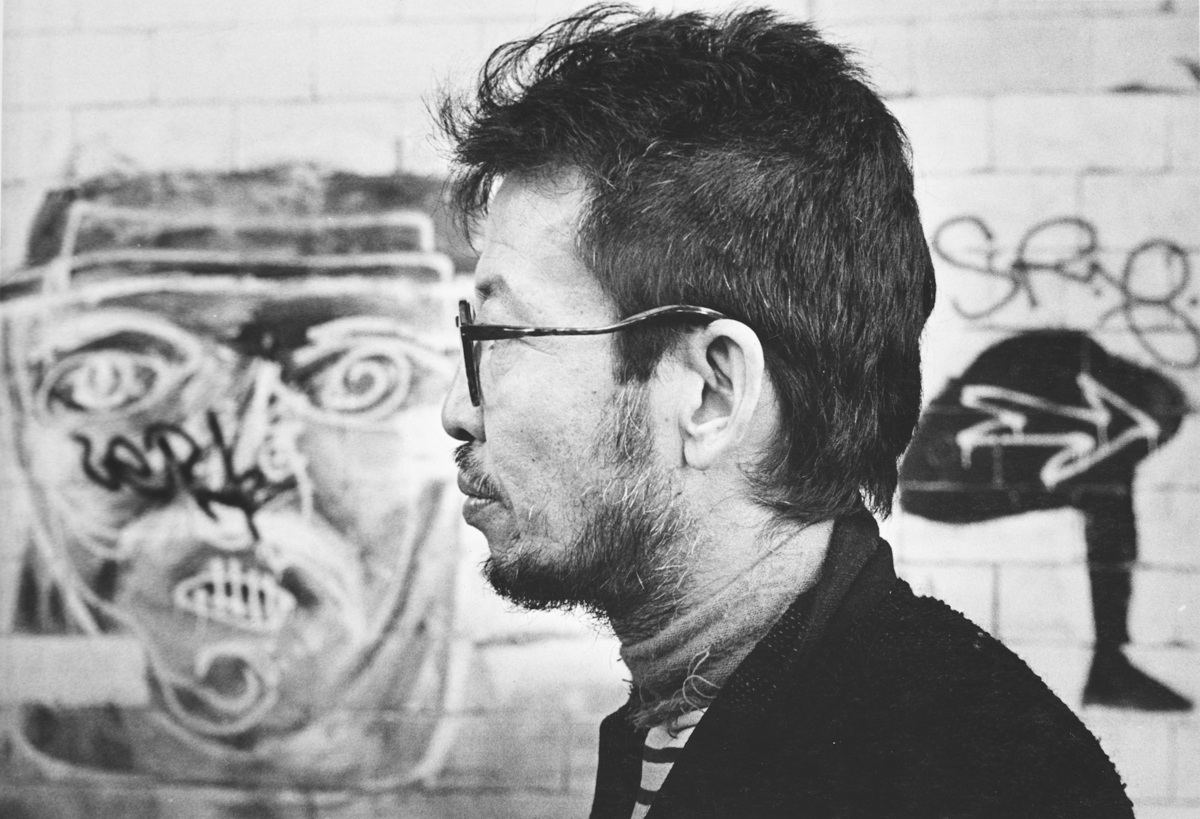
Photographed in 1987 in New York's East Village, a profile of the Chung Chanseung. Photo credit: Lim Young Kyun
Chung Chanseung
* Source: MMCA
Related
-
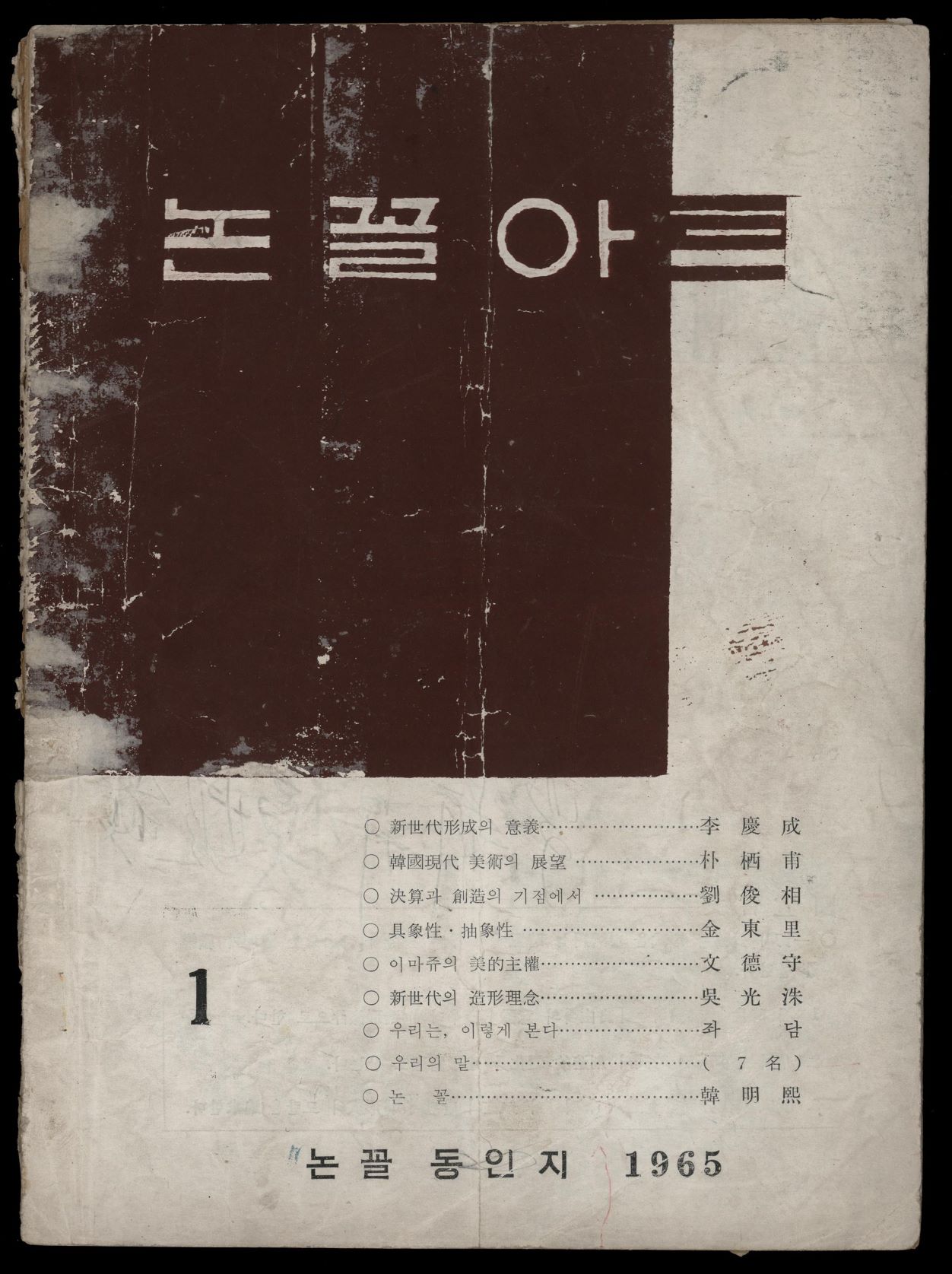
Non Col
An art group formed in 1962 by five alumni of Hongik University: Chung Chanseung, Han Youngsup, Choi Taeshin, and Kim Inhwan. The name Non Col derived from the old name for the Hongjaewon, where their joint studio was located. In February 1965, the group held its first exhibition at the Sinmunhoegwan Gallery with the support of Hankook Ilbo newspaper, which also published Non Col Art, a magazine for the group. Written correspondence and interviews indicate that the members of the group were highly critical of the Korean contemporary art scene at the time. They felt both a sense of responsibility to engage in social activism as part of the April Revolution generation, and a desire to move away from participating in the state supported exhibitions which used the competition format. The group disbanded in 1967 after its third exhibition. Afterward, several members spearheaded the establishment of the Sinjeon Group in 1967. This avant-garde orientated group was part of the new generation that emerged within the Korean art community after Informel began to lose momentum.
-
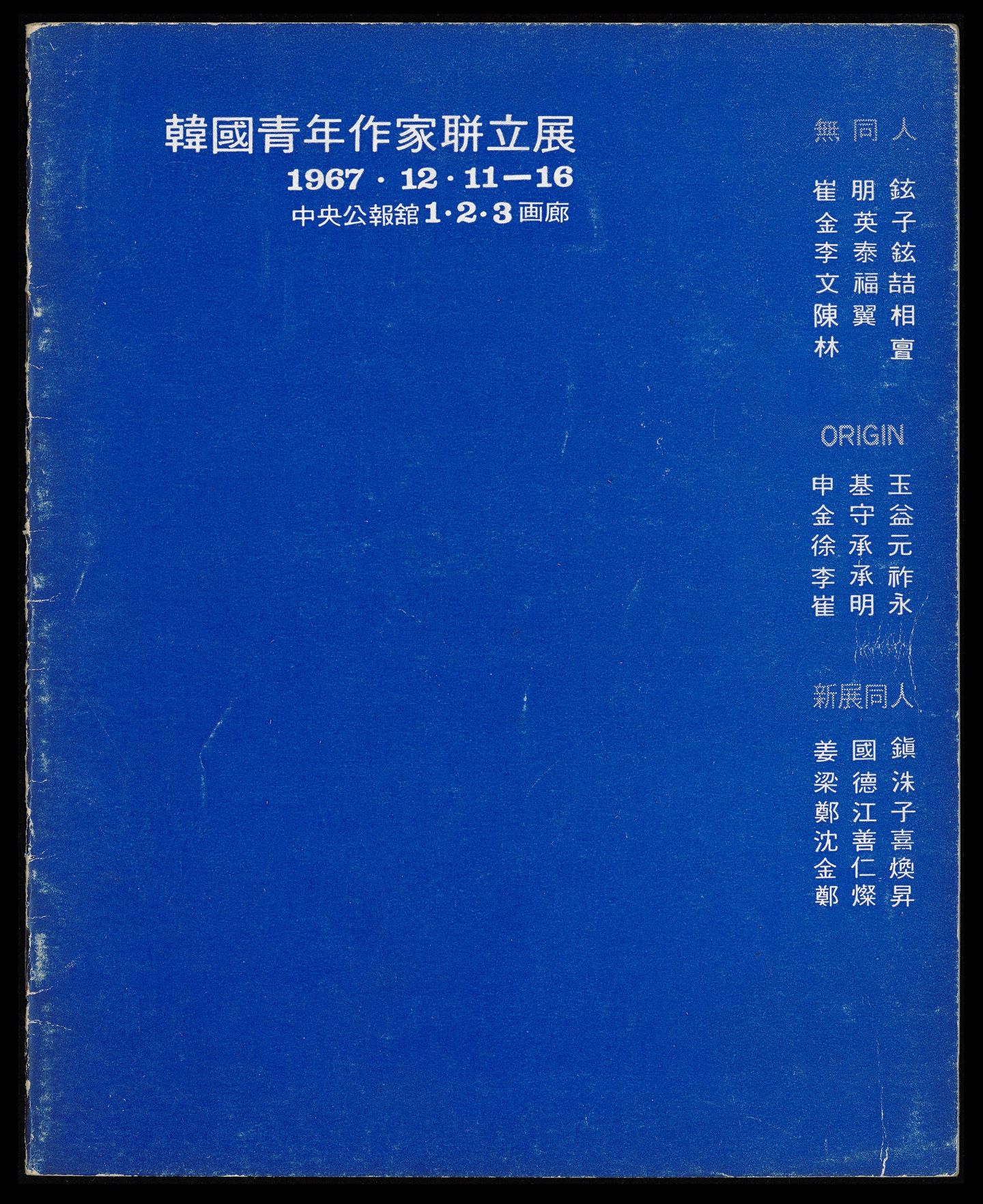
Union Exhibition of Korean Young Artists
The Union Exhibition of Korean Young Artists was an art show that members from Origin Fine Arts Association, Zero Group, and Sinjeon Group organized to be held at the Korean Information Service Gallery from December 11 to 17, 1967. By choosing to present works in what were the mainstream genres in Western art, such as pop art, op art, environmental art, happenings, and sculpture, the Exhibition helped to usher in a new era for Korean art after the dominance of the Informel group. Members from the three groups were mostly graduates from Hongik University. The manifesto they released stated: “Informel didn’t provide anything for last ten years. We are artists as activists who aim to create art after abstraction, art in everyday life, and public-friendly art.” This manifesto clearly expressed a desire to challenge the art world establishment, and the Coalition Exhibition is often considered as the beginning of a period of Korean “Experimental art (silheom misul),” which existed from the end of the 1960s to 1970s.
-
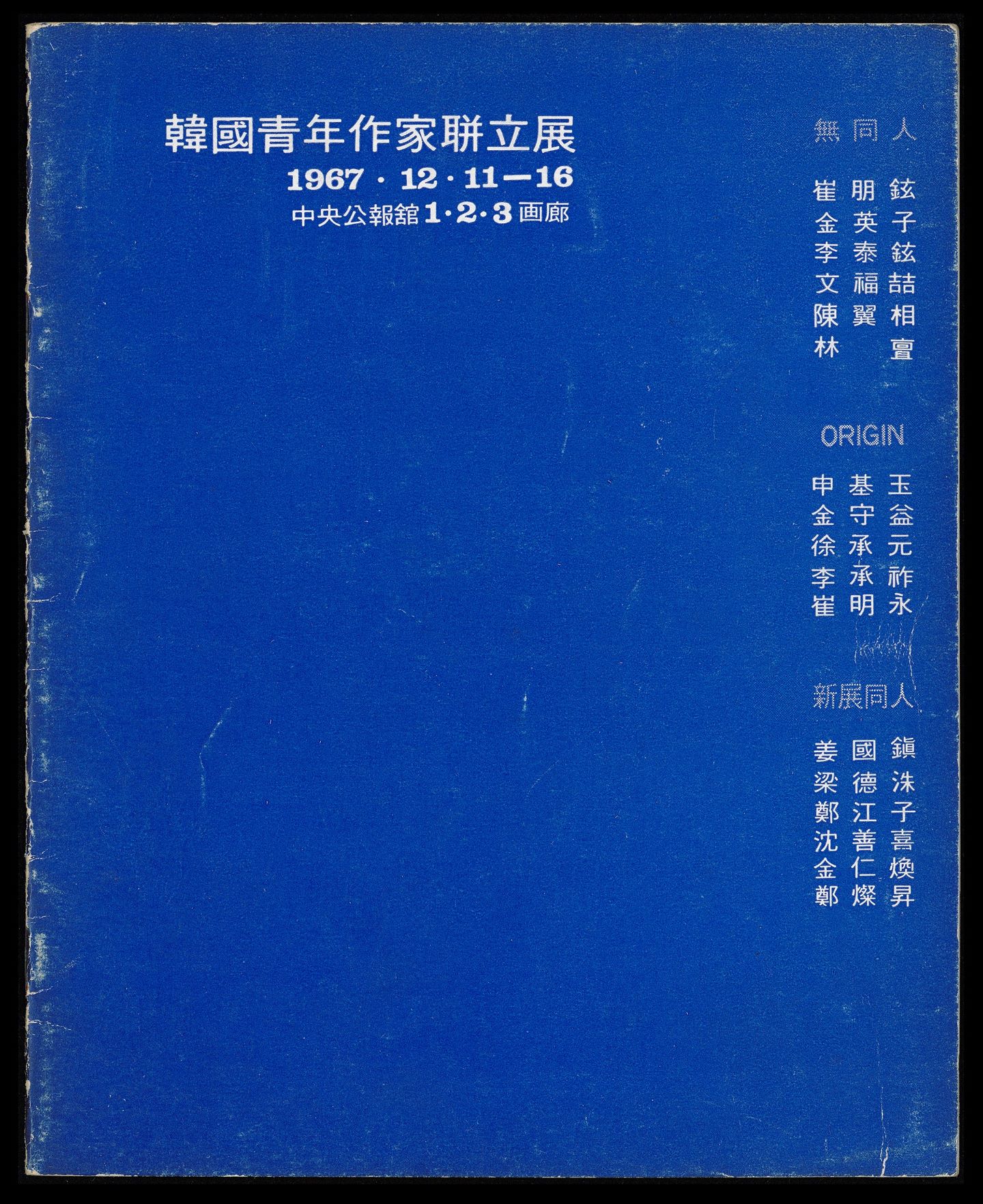
Sinjeon Group
An art organization formed in 1967 by alumni of Hongik University. Chung Chanseung and Kim Inwhan were previously members of Non Col, a group formed in 1962. Their work was characterized by Informel, but after Nonkkol disbanded due to differences in opinion within the membership, the two formed the Sinjeon Group alongside Kang Kukjin, Yang Deoksu, Shim Sunhee, and Jung Kangja, and they participated in the Union Exhibition of Korean Young Artists. The Sinjeon Group, in its departure from Informel, engaged in experimental work such as objet art, installations, and happenings.
Find More
-
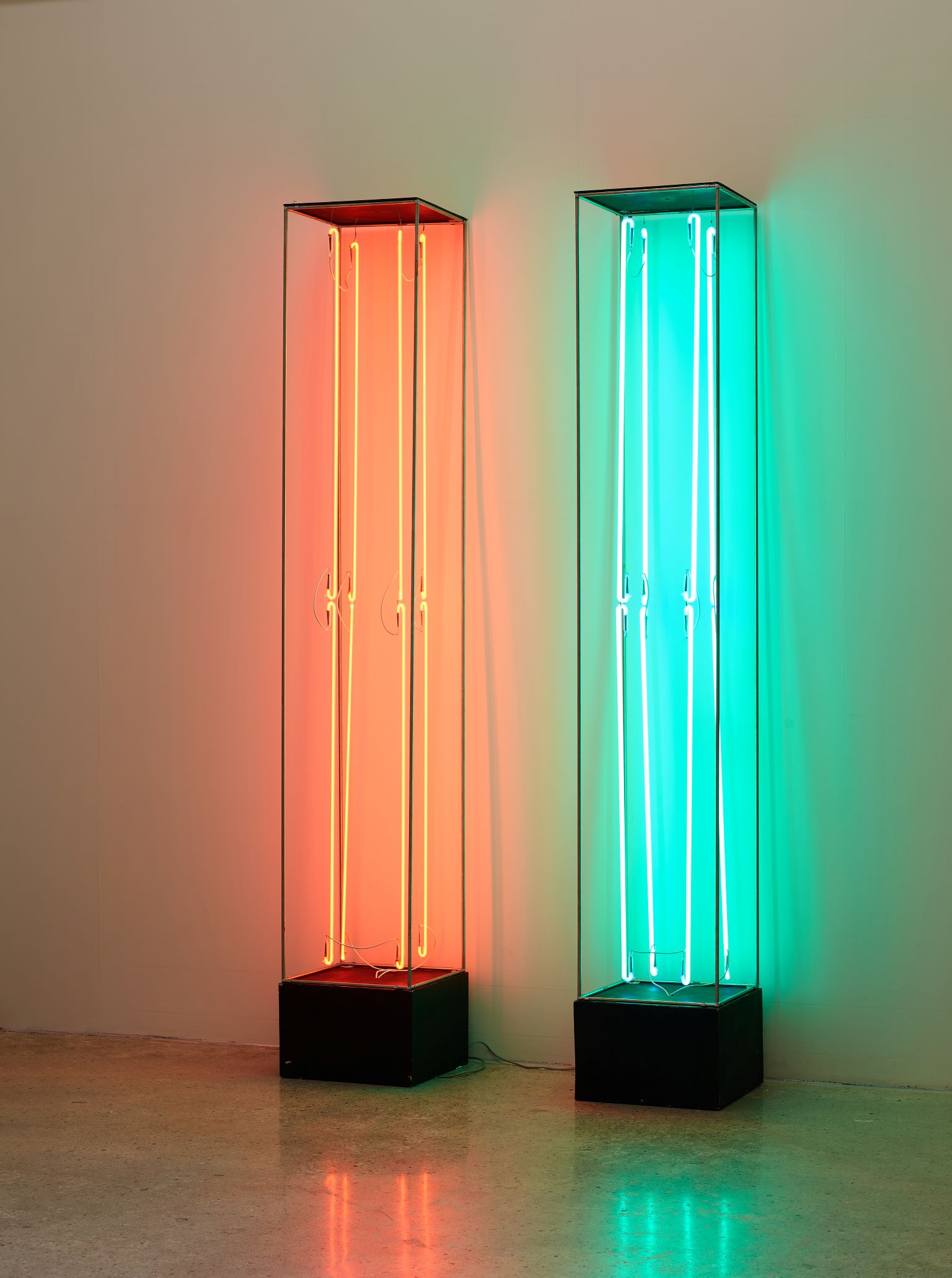
Experimental art
A genre of Korean art characterized by non-two-dimensional work such as sculpture, environmental installation and performance that emerged in the late 1960s and continued over the course of the 1970s. Art historian Kim Mikyung has analyzed the movement in the context of the political and social phenomena of the time and first coined the term experimental art to describe such work.
-
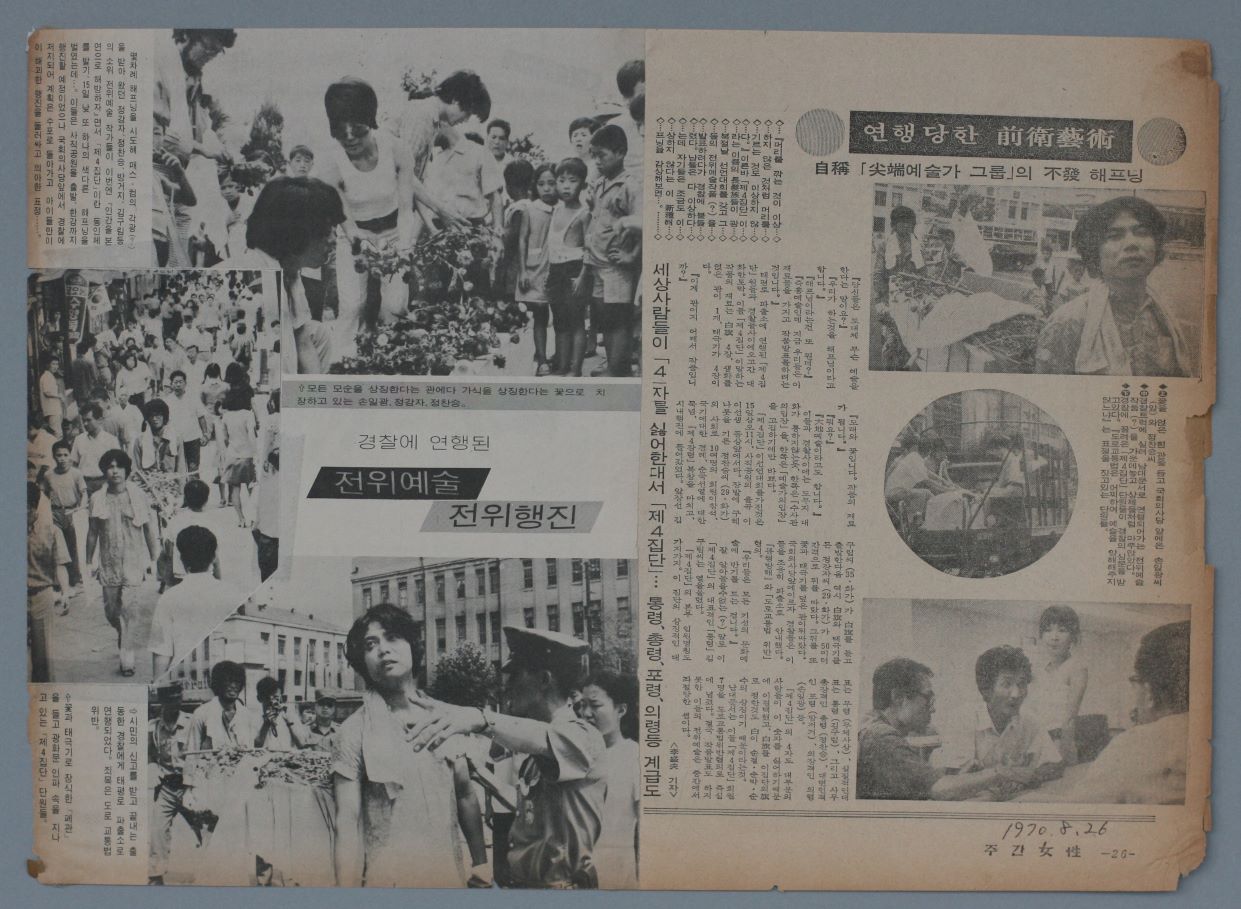
Intangible Art
Intangible art (muche yesul) is an art concept espoused by The Fourth Group, the avant-garde cultural organization in South Korea, formed in June 1970. The members of The Fourth Group, whose activities encompassed arts, press, popular culture, and religion, sought to create a total art that synthesized theater, art, dance, and literature. They hoped to revive a pure Korean culture and become a global cultural force. According to their creed, intangible art is derived from the core of Laozi’s philosophy, “the political idea of abandoning the will to dominate and being ruled by unconditioned nature.” In other words, the term “being intangible” means abandoning the Western way of thinking that separates the mind from the body, the unification of politics, economy, society, culture, and science into art, and returning all existing independent fields to a state of “nothingness” and making the boundaries of each field disappear. To materialize such a concept of being “intangible,” the members of The Fourth Group introduced the Western avant-garde art of the happening and internalized it into their intangible art, which, as its name implies, is art without form and art that leaves no results. The first solo exhibition of Jung Kangja, a member of The Fourth Group, which consisted exclusively of her happening, was also entitled Intangible (National Public Information Center, 1970). -

Zero Group
An experimental art group formed in 1962 by nine students in Seoul. The founding members were Kim Youngnam, Kim Youngja, Moon Bokcheol, Seok Ranhi, Lee Taehyun, Choi Boonghyun, and Hwang Ilji, who were painting majors in Hongik University; Seol Yeongjo, an architecture major at Hongik University; and Kim Sangyeong, a painting major at Seoul National University. The group disbanded following its second exhibition in 1967. Over its operation, the group drew attention from critics for its bold experimentation despite the repressive political and social atmosphere of 1960s South Korea.






